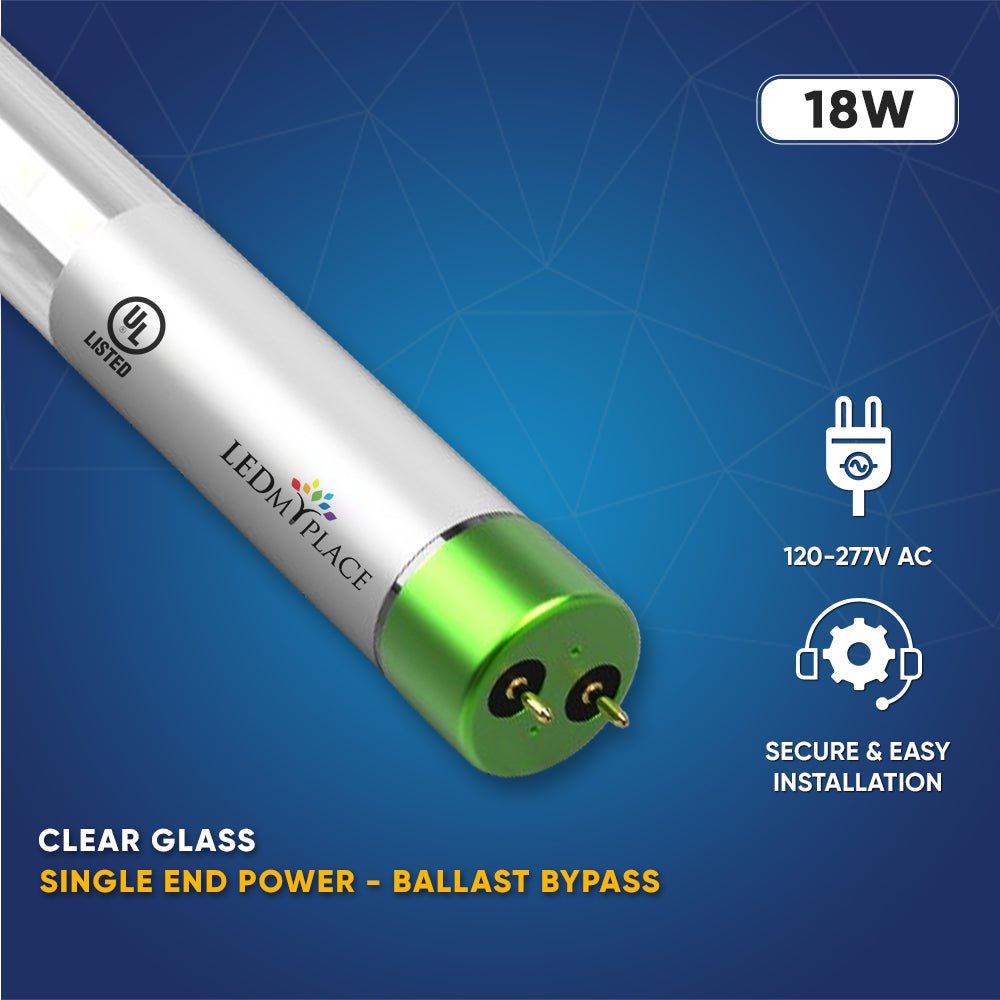Introduction
In the ever-evolving world of lighting technology, LED tubes have emerged as a popular choice for both residential and commercial spaces. They offer energy efficiency, long lifespan, and enhanced illumination. However, when it comes to LED tubes, there's a crucial decision to make: single-ended or double-ended tubes? In this article, we will explore the differences between these two options to help you make an informed choice.
Understanding LED Tubes
Before diving into the single-ended vs. double-ended debate, it's essential to understand what LED tubes are and how they work.
What are LED Tubes?
LED tubes are energy-efficient lighting options that have become the go-to choice for replacing traditional fluorescent tubes. They consist of light-emitting diodes (LEDs) that emit light when an electrical current passes through them. LED tubes offer a myriad of advantages over their fluorescent counterparts, including energy savings, longer lifespan, and better light quality.
-
The Single-Ended LED Tube
Let's begin by examining the single-ended LED tube and its characteristics.
Single-Ended LED Tubes Explained
Single-ended LED tubes, as the name suggests, have electrical connectors at only one end. They are typically designed to work with electronic ballasts or can be directly wired to the electrical supply.
Advantages of Single-Ended LED Tubes
-
Ease of Installation: Single-ended LED tubes are relatively easy to install, making them a suitable choice for retrofitting existing fluorescent fixtures.
-
Compatibility: They are compatible with a wide range of fixtures, making them versatile for various applications.
-
Cost-Efficiency: Single-ended tubes are often more affordable than their double-ended counterparts.
-
The Double-Ended LED Tube
Now, let's shift our focus to double-ended LED tubes.
Double-Ended LED Tubes Explained
Double-ended LED tubes have electrical connectors at both ends. They are designed to work without a ballast and require rewiring of the fixture.
Advantages of Double-Ended LED Tubes
-
Energy Efficiency: Double-ended tubes are known for their high energy efficiency, making them an eco-friendly choice.
-
Longevity: They tend to have a longer lifespan compared to single-ended tubes, reducing maintenance costs.
-
Better Light Distribution: Double-ended tubes often provide more uniform light distribution.
Making the Choice
Choosing between single-ended and double-ended LED tubes depends on various factors.
Considerations for Your Decision
-
Existing Fixtures: If you have existing fixtures with electronic ballasts, single-ended tubes might be the more convenient choice.
-
Energy Savings: For maximum energy savings, double-ended tubes are a better option, especially in the long run.
-
Maintenance Costs: Factor in the maintenance costs and the lifespan of the tubes when making your decision.
Conclusion
In the debate of single-ended vs. double-ended LED tubes, there is no one-size-fits-all answer. The choice depends on your specific needs, budget, and the existing infrastructure. Both options offer unique benefits, so it's crucial to weigh them carefully before making a decision.
FAQs
Q: Are LED tubes more energy-efficient than fluorescent tubes?
A: Yes, LED tubes are significantly more energy-efficient and consume less power.
Q: Can I retrofit my existing fluorescent fixtures with LED tubes?
A: Yes, you can retrofit existing fixtures with LED tubes, especially single-ended ones.
Q: Do double-ended LED tubes require any special wiring?
A: Yes, double-ended LED tubes require rewiring the fixture to remove the ballast.
Q: Which type of LED tube is better for office lighting?
A: Double-ended LED tubes are often preferred for office lighting due to their energy efficiency and longevity.
A: LED tubes can last up to 50,000 hours or more, depending on the quality of the product and usage.


















































































